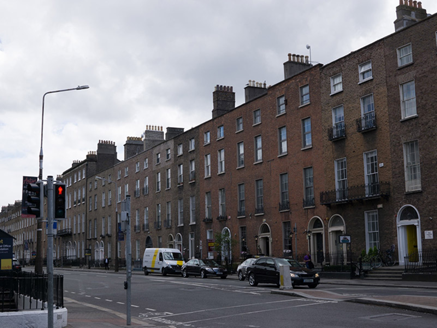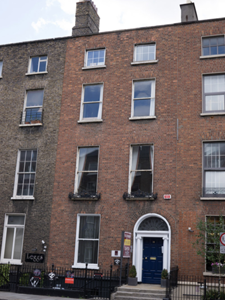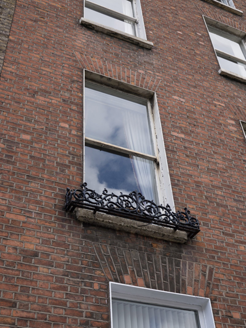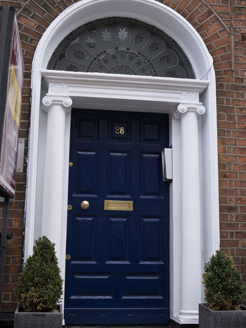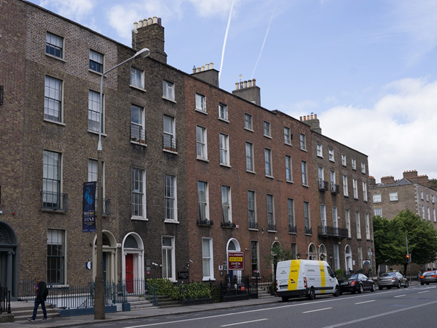Survey Data
Reg No
50110507
Rating
Regional
Categories of Special Interest
Architectural, Artistic
Original Use
House
In Use As
Office
Date
1805 - 1815
Coordinates
316290, 232915
Date Recorded
25/06/2017
Date Updated
--/--/--
Description
Terraced two-bay four-storey former house over basement, built c. 1810, having two-storey projection to rear (west) elevation. Now in use as office. M-profile hipped slate roof concealed behind red brick parapet with granite coping. Brown brick and rendered chimneystacks, having clay pots. Red brick, laid in Flemish Bond, to walls, having cut granite plinth course over rendered walls to basement. Square-headed window openings with granite sills and raised rendered reveals, having one-over-one pane timber sliding sash windows and some replacement windows. Decorative cast-iron balconettes to first floor windows. Square-headed window and door opening to basement with recent fittings. Round-headed door opening having moulded render surround. Doorcase comprising Ionic columns and entablature. Leaded petal fanlight with decorative frosted glass having acanthus leaf detail and some tinted glass. Timber panelled door. Granite and limestone platform with granite steps. Wrought-iron railings having cast-iron posts with urn finials, set on carved granite plinth wall to front.
Appraisal
The balanced proportions of the façade are characteristic of design in this period. The preservation of salient details such as the windows and particularly fine doorcase contribute to the building’s significance. Lower Leeson Street was an important routeway in Georgian Dublin, serving as the road to Donnybrook from St. Stephen's Green, and the street contains several townhouses built for Lord Dunboyne, the Duke of Ormonde.
